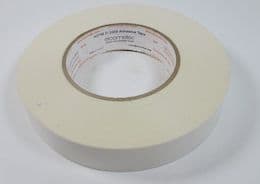
Curated with aloha by
Ted Mooney, P.E. RET

The authoritative public forum
for Metal Finishing 1989-2025

-----
Process/Procedure for Cross Hatch Test - Measuring Adhesion by Tape Test
Q. I am seeking a consensus on when the "cross hatch adhesion test" should be done. After the last coat has been allowed to dry and cure, when would you do the "cross hatch test"? Would appreciate all responses. Thanking you in advance. Mac Simmons .
Mac Simmons- Massapequa, New York USA
2000
2000
A. ASTM has a spec for the crosshatch test, but I can't remember whether it says anything about how long to wait before testing. Just be aware that freshly cured paint will frequently do better on flexibility and adhesion tests than when allowed to age. As long as you do the test the same way each time you don't have to worry about that effect.
The key is to do testing on enough parts personally so that you know what the result should be on a given part, then if you get a different result you'll know it's something unusual and not simply a timing issue.

Jeff Watson
- Pearland, Texas
A. I don't believe that the ASTM spec calls out a waiting period. We paint to a lot of military spec and some of them do call out times. Mil-C-53072 [MIL-DTL-53072 [link is to free spec at Defense Logistics Agency, dla.mil]] (this is for CARC paint) calls for 168 hours cure (at 70/50) prior to testing. Mil-C-193 simply says to do the testing after the top coat has been allowed to cure.
You might want to talk to your paint supplier about the time needed for cure and what they would recommend. Depending on your type of customer, you may need their buy in too.
Kelly Draper- West Plains, Missouri
2000
A. Mac, I ran into the same situation and decided to wait until the parts (and test panels) had completely cured before testing. In my case this involved a 24-hr room temp cure then a 24-hr low temp bake. I figured that the process wasn't complete, and therefore wasn't ready to be evaluated, before then. Good luck (adhesion!)

Megan Pellenz
- Syracuse, New York
2000
2000
![]() I would like to thank those who answered my request for a "consensus" on how long after the last coat is applied, and the time when a "Cross Hatch Adhesion Test" is done.
I would like to thank those who answered my request for a "consensus" on how long after the last coat is applied, and the time when a "Cross Hatch Adhesion Test" is done.
I was writing an article on this test, and after doing much research with coating manufactures, companies that make the "CHAT" test kits for doing this test, a few chemists, and also checking with ASTM and ISO --
There was no consensus, there were too many different answers, no standard to really use in my article. I would like to share what I consider one man's opinion, and what I wrote in my article concerning the test.
"Because of the numerous coatings, and methods of applications, and different systems for drying on the market today, I cannot give a definitive answer as to when to do this test on the coatings you are using, I personally prefer doing the test after a week to ten days, and then doing another test two weeks later to double check any differences, always keeping notes on the two samples to make comparisons for future references. This suggestion includes the air and heat dried coatings.
If a faster test must be done, then these calculations could be used, If less then 20% of the coating is removed this is considered passable, if greater then 20% of the coating is removed this is considered poor adhesion between the coatings and substrate."
I hope someone will find this helpful.
Thanks again for your answers. I considered all of them.
Mac Simmons
Mac Simmons [returning]- Massapequa, New York USA
Q. I do my crosshatch test not even 10 minutes after the tanks come out of our oven. Is that too soon or should they cool down more? And also, do I peel the tape off the tank or do I pull the tape up? Thanks.
Margaret Weaverpowdercoater - Andover, Ohio
December 27, 2009
February 28, 2011
Q. Dear Megan
You mentioned the importance of curing of the CARC.
You use 24 hour treatment of moderate heating: what temperature would you advise?
What passivate did you use? was it on Iron?
I would be interested to exchange views concerning the issue.
Thanks
Shay
chemist - Israel
----
Ed. note: Sorry, Shay, but we haven't seen Megan here for a while; but we welcome an exchange of views with all readers :-)
Multiple threads merged: please forgive chronology errors and repetition 🙂
Q. Hello,
My name is Julie I am a quality Inspector for an alternative energy company.
The powder coating textured Polyester TGIC is flaking and peeling around EKO's.
Prior to knocking out, the powder coat appears fine. Can you tell me how to perform a cross hatch test for inspection purposes.
Buyer of Finished Goods - Arlington, Washington, USA
2007
A. See Method B of ASTM D3359, 'Standard Test Methods for Measuring Adhesion by Tape Test.' For flat substrates and paint up to 125 microns (5 mils) thick, it's easiest to use a commercially available test kit: http://www.gardco.com/pages/adhesion/pa2000kit.html
For non-flat surfaces and/or thicker paint, see Method A (X-cut) of ASTM D3359.
- Goleta, California
Rest in peace, Ken. Thank you for your hard work which the finishing world, and we at finishing.com, continue to benefit from.
A. The most common method is ISO 2409 so I would suggest you buy that spec. It is a destructive test so you need to spoil a part to do it as QC but it is ok for test panels.
Basically cut down to the metal with a knife in a cross hatch pattern and use pressure sensitive masking tape to try to pull off the paint. The ISO method is basically 10 scribe lines 1mm apart and the same perpendicular to those which gives you a set of boxes. You can use a special tool or a sharp knife with a steel ruler.
You can determine the number of lines and distance apart depending on your needs. The tape used also needs to be standardised. We supply the 3M #250 1" tape which is a commonly used standard.
- Halifax, West Yorkshire, England
2007
July 9, 2014
A. There is no spec or standard to advise when we should test (ASTM 3359 or ISO).
The one and only answer is it should be tested after initial curing and long term curing.
To know when it is initial and long term curing severals factors should be noticed:
1- Numbers of Mils applied to the surface.
2- Ambient air drying.
3- Forced curing ... heat room
4- Method of application
5- Type of coating , epoxy , polyurethane, organic zinc, etc.
By the end, there are so many systems that the only one who can send you in the right direction is your paint supplier.
Never forget to ask for an official email about the lapse of time before testing -- too many answer come from sellers instead of a real technician from the company brand name.
- canada , sorel, québec
Q. My question is it recommended to do a cross hatch test. After the panel that is coated and submitted to salt spray, after 240 hours is it recommended to do a cross hatch test? And what standard is the recommendation in?
Jim Konzen- Saint John, Indiana
November 13, 2014
Q. I have a question in regards to cross hatch testing for adhesion. The standards speak to flat, smooth surfaces to perform the tests on. What type of test is best for a surface that is round, like a drum?
Donte BeauCommercial Transformers - Winterville, Georgia
February 20, 2015
Hi Dante. Personally, I would expect this test to be fine for a drum (a fairly large diameter cylinder).
Regards,

Ted Mooney, P.E. RET
Striving to live Aloha
finishing.com - Pine Beach, New Jersey
Q. Hi,
I am working in radiator manufacturing industry. My query is regarding powder peel off in cross hatch test after 5-6 month on aluminium radiator (material is HS, both side clad alloy 4343-10%) using chrome-free chromatizing process.
Regards,
Dipak, India
- VADODARA,Gujarat, India
January 8, 2017
January 2017
? Hi Dipak. I'm not hearing a question. Sorry for perhaps being dense, but what do you want to know?
Regards,

Ted Mooney, P.E. RET
Striving to live Aloha
finishing.com - Pine Beach, New Jersey
March 3, 2017
A. Salutations,
RE: Test Surface / Method
With astmd3359, there are two test methods of interest to our fellow readers.
Test Method A is designed for round surfaces / field tests where a large X is inscribed onto the surface of question.
Test Method B is more ideal for the lab environment where the 1 mm matrix detailed in previous responses would be used. In my opinion, Test Method B is preferable because of the higher resolution of failure (the test method has sample pictures for ratings).
RE: Cure Time
In my experience validating organic coatings, cross adhesion testing normally occurs once you're confident that the topcoat has fully cured. The objective of the test is to ensure proper adhesion between the topcoat and the substrate under fully cured conditions (in the real world) and testing before the full cure set would not be representative of the end product. To ensure cure you can use different methods including ASTM D3363 (Pencil Hardness) or ASTM D5402 (Methyl Ethyl Ketone (MEK) Rub) prior to cross hatch testing.
RE: Variations of the Cross Hatch
Our company roughly follows some other variants of the ASTM D3359 by using the AAMA 2605 standard, which is an architectural aluminum standard. Prior to the tape phase of the test, but after scribing your matrix (ASTM D3359 Test Method B), immersing the sample in boiling water for 30 minutes or immersing the sample in 100 °F water for 24 hours and then performing the tape are variants we use to validate coatings.
Vapor Bus International - Buffalo Grove
----
Ed. note: This is only one of several threads on closely related matters. Please see also
letter 23304, "Powder Coating Adhesion Testing"
or use search terms like "cross hatch powder coating" in the search engine.
Q, A, or Comment on THIS thread -or- Start a NEW Thread
